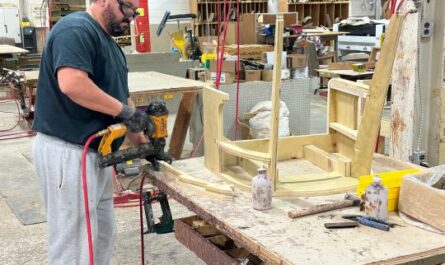Online product catalog helps link manufacturers with prospective customers around the globe
HO CHI MINH CITY, Vietnam — Earlier this year the Handicraft & Wood Industry Assn. of Ho Chi Minh City launched an online platform aimed at connecting Vietnamese furniture manufacturers with customers in the U.S. and beyond.
The HOPE Fairs (HAWA Online Platform for Exhibition) initiative was particularly timely given the many travel restrictions that kept customers from traveling to and from Asia. It became even more timely following the Delta spike that essentially brought the furniture and other industries in Vietnam almost to a complete standstill this past summer.

Today the country is on the path to resuming production and returning to full capacity, which likely won’t be achieved until the second quarter of 2022, officials predict.
That said, it will be critical for companies to maintain some kind of communication, even if it’s all done virtually. HAWA’s online platform is one way for manufacturers and their customers to communicate moving forward.
The platform is also a sign of HAWA’s continued efforts to use technology as a bridge across oceans and continents in recent years. The organization, which is comprised of smaller homegrown Vietnamese manufacturers, as opposed to large Chinese and Taiwanese-owned mega factories, has made major strides to do this, first through its website and later through its deployment of webinars to communicate to the furniture industry in and outside Asia. I know from experience as I have been involved in two of these webinars since earlier this year.
Both virtual events obviously required some planning, particularly as we speakers gave presentations that could easily run well over the time allotted. But HAWA’s professionalism and attention to detail brought these events off without a hitch, which was good for both the presenters and the audience. While this was a mostly Vietnamese audience in each case, there also were plenty of viewers from other parts of the world, including the U.S. which is keenly interested in how Vietnam will emerge from this stalemate moving forward.
I thought of all this while learning more of late about the HOPE Fairs platform. Describing itself as a Virtual Gateway to the Vietnam Furniture Industry, it provides a menu of product categories and companies that produce those items. It also offers a link to those companies, providing email addresses for inquiries from new and existing customers.
Of course the site is still in its early stages, which means some categories are more heavily represented than others. For example, while bedroom and dining room segments turned up dozens of SKUs combined, the hotel and contract furniture categories only turned up three resources. There were none represented in the children and nursery furniture category.
The upholstery segment also was fairly well represented, yet office furniture – at least residential office – wasn’t, which could be a missed opportunity given the still high demand for home office.
Thus with an estimated 500 member companies, HOPE Fairs certainly has a long way to go in terms of representing the collective strength of the Vietnamese furniture industry. Yet the platform appears to be a good start in getting some companies recognized for the types of products they can build for the U.S. and other markets.
It’s once again an example of how a homegrown industry is using technology to bridge the gap that both miles and travel restrictions have created to prevent manufacturers and their customers from communicating in person during the pandemic. As people start traveling once again, this obviously won’t be the only type of sourcing solution. But it could help supplement peoples’ sourcing initiatives as they get used to the idea of not having to travel so far, so often.




